I love LAPD's SWAT TEAM
LAPD SWAT Special Weapons And Tactics "Americas First Team"

In 1967 the Los Angeles Police Department (LAPD) became the nations first law enforcement agency to form a elite tactical unit within its ranks. Since its inception the Los Angeles Police Department's Special Weapons And Tactics (SWAT) Team has stood ready to respond to situations that were beyond the capabilities of normally equipped and trained Department personnel.
The special weapons and tactics concept originated during the late 1960s. At this time the US was in a state of turmoil with violent antiwar, antigovernment protests, and race riots occurring on an almost daily basis. Racial tension was at an all time high, and subversive organizations and criminals were striking at the government facilities, injuring innocent civilians, and committing crimes with what some considered impunity. During many of these incidents local law enforcement officers found themselves the targets of sniper attacks. With many of these incidents occurring in Los Angeles, the LAPD leadership decided to study the problem, and hopefully come up with a viable solution.After conducting an examination of how each incident was handled by law enforcement, the LAPD leadership realized that an effective response to these situations was virtually nonexistent. Realizing that a new approach to these dangerous situations was needed, Officer John Nelson conceived and presented the special weapons and tactics concept to an inspector named Darryl F. Gates. Gates, a rising star within the LAPD, recognized the need for a force of highly disciplined officers utilizing special weapons and tactics, concurred and approved the concept, and ordered the formation of the new unit.
Heavily armed SWAT operator prepares to enter a building during a routine training exercise.
The first Special Weapons And Tactics (SWAT) Unit consisted of 15 four-man teams. The teams were composed of volunteers drawn from patrol and other more specialized assignments. All of the volunteers had specialized police experience and prior military service. Each unit was activated for monthly training, or when the need for special weapons personnel arose. These units, known as "station defense teams," provided security for police facilities during civil unrest. A good portion of the initial training centered on regaining control of the city in the event of a major disturbance, with officers practicing covert movement through the city's extensive network or sewers.
SWAT's first major challenge came in December of 1969. On December 9th, LAPD officers tried to serve search warrants for illegal weapons at the Black Panther Headquarters at 41st and Central Streets. The Black Panthers resisted, firing on the officers with shotguns and automatic weapons. During the course of the four hour battle, over 200 LAPD officers and six Black Panthers fired thousands of rounds of ammunition at each other. The Panthers were finally forced to surrender to SWAT officers, but only after three Panthers and three police officers were wounded.
After the shoot-out the LAPD leadership took a look at its tactical program and came to some interesting conclusions. One the main problems identified was the continued difficulty of mustering a team response in a timely manner. So in 1971, the SWAT personnel were assigned on a full-time basis to Metropolitan Division ("Metro") to help eliminate some of the problems posed by having a part time tactical team scattered throughout the various divisions of the Department. Metropolitan Division, which had a long-established reputation as the tactical unit of the Department, was organized into "A", "B" and "C" Platoons. The Special Weapons And Tactics Unit was given the designation of "D" Platoon, and at the same time formally adopted the acronym SWAT (* Note- The acronym originally stood for Special Weapons Assault Team, but the name was dropped in favor of the more familiar term as "Attack" was considered to controversial*). This was a watershed event in SWAT history, as Old SWAT became new SWAT a full fledged dedicated tactical unit operating within the Department's Metro Division.
On the afternoon of May 17, 1974, a group of heavily armed terrorists known as the Simbianese Liberation Army (SLA), barricaded themselves in a house on East 54th Street at Compton Avenue. The entire event was broadcast live via television and radio, and chronicled in the world press for days after the event. Three SWAT squads, and several hundred other officers descended on the home hoping to get the SLA members to peacefully surrender. Appeals to surrender were made on 26 separate occasions. After the initial 18 appeals were met with deaf ears, tear gas was introduced in a final effort to flush the suspects out of the house, to which the SLA responded with responded with bursts of gunfire. During the initial burst of return fire from the police, all six members of the SLA were wounded by gunfire. The police called for barricaded SLA gunmen to surrender an additional 10 time during the course of the gun battle with out success. The suspects refused to leave the house, firing 3,772 rounds at the police and anyone else who happened to be in the area. Despite the heavy volume of fire no bystanders or police officers were injured by gunfire. The suspects, however, were not so lucky. During the battle a fire had erupted inside the house. All six of the suspects eventually perished from their gunshot wounds or in the ensuing blaze. After this incident SWAT once again came under scrutiny. Admission standards were tightened and training was geared toward avoiding similar incidents inthe future. Today both the Black Panther and SLA incidents are remembered by SWAT, with the numbers 41 and 54 appearing on the team's unofficial patch.
SWAT's next major challenge was preparing for the 1984 Summer Olympic Games. The games were scheduled to take place throughout the Los Angeles area, and the city was considered a prime target for terrorist activity. After a through assessment of the situation, Department and SWAT Team leaders recognized the need to develop skills that did not yet exist within the LAPD SWAT Team or any other civilian tactical unit at this that time.
As a result of this decision, in 1983, the Department sent three SWAT supervisors to Europe to evaluate and develop the training techniques employed by such famed military counter-terrorist and hostage rescue units as Germany's GSG-9, France's GIGN and the British 22nd SAS Regiment. The Department then implemented a rigorous and difficult training program with one goal in mind - to develop a hostage rescue capability within the LAPD SWAT Team.
Each SWAT officer received well over 2,000 hours of training while developing this new capability. While the Olympic Games were in progress SWAT officers worked a 24 hours on/24 hours off work scheduled, while conducting training exercise to help maintain the edge they needed in case of an incident. The 19 day event passed with out incident and helped raise SWAT's standards to a new level.
In 1992 Los Angeles once again became the center of world attention. Four LAPD officers had been found not guilty of using excessive force in the arrest of drunk driving suspect Rodney King. Once the verdict was announced by both local and national media, the city rapidly began to take on the look of a third world war zone. The sheer size of dealing with the growing level of violence and anarchy developing in the streets became overwhelming. LAPD responded, along with other area law enforcement agencies as best they could, with a massive deployment of officers. Included in this response was the SWAT platoon. SWAT acted as a mobile fire brigade rushing to assist units in trouble, and to regain control of areas that were under all-out assault by rampaging mobs of rioters.
On February 28, 1997 the LAPD SWAT team became involved in one of the most violent incidents in US law enforcement history. Two heavily armed men, both professional bank robbers and career criminals, entered a bank located in the North Hollywood section of Los Angeles with the intention of robbing it. Unknown to both men was the fact that they were spotted by LAPD officers, who immediately requested assistance. As the two attempt to exit the building they discovered they were now surrounded by police. They immediately began firing on the officers and bystanders in an attempt to break out and escape. Three civilians and nine officers were shot within the first five minutes of the shoot-out, and a total of 350 officers were eventually called to the scene.

LAPD SWAT team members sweep the residential area surrounding the bank, searching for possible additional suspects.
LAPD SWAT Special Weapons And Tactics "Americas First Team"

In 1967 the Los Angeles Police Department (LAPD) became the nations first law enforcement agency to form a elite tactical unit within its ranks. Since its inception the Los Angeles Police Department's Special Weapons And Tactics (SWAT) Team has stood ready to respond to situations that were beyond the capabilities of normally equipped and trained Department personnel.
The special weapons and tactics concept originated during the late 1960s. At this time the US was in a state of turmoil with violent antiwar, antigovernment protests, and race riots occurring on an almost daily basis. Racial tension was at an all time high, and subversive organizations and criminals were striking at the government facilities, injuring innocent civilians, and committing crimes with what some considered impunity. During many of these incidents local law enforcement officers found themselves the targets of sniper attacks. With many of these incidents occurring in Los Angeles, the LAPD leadership decided to study the problem, and hopefully come up with a viable solution.After conducting an examination of how each incident was handled by law enforcement, the LAPD leadership realized that an effective response to these situations was virtually nonexistent. Realizing that a new approach to these dangerous situations was needed, Officer John Nelson conceived and presented the special weapons and tactics concept to an inspector named Darryl F. Gates. Gates, a rising star within the LAPD, recognized the need for a force of highly disciplined officers utilizing special weapons and tactics, concurred and approved the concept, and ordered the formation of the new unit.

Heavily armed SWAT operator prepares to enter a building during a routine training exercise.
The first Special Weapons And Tactics (SWAT) Unit consisted of 15 four-man teams. The teams were composed of volunteers drawn from patrol and other more specialized assignments. All of the volunteers had specialized police experience and prior military service. Each unit was activated for monthly training, or when the need for special weapons personnel arose. These units, known as "station defense teams," provided security for police facilities during civil unrest. A good portion of the initial training centered on regaining control of the city in the event of a major disturbance, with officers practicing covert movement through the city's extensive network or sewers.
SWAT's first major challenge came in December of 1969. On December 9th, LAPD officers tried to serve search warrants for illegal weapons at the Black Panther Headquarters at 41st and Central Streets. The Black Panthers resisted, firing on the officers with shotguns and automatic weapons. During the course of the four hour battle, over 200 LAPD officers and six Black Panthers fired thousands of rounds of ammunition at each other. The Panthers were finally forced to surrender to SWAT officers, but only after three Panthers and three police officers were wounded.
After the shoot-out the LAPD leadership took a look at its tactical program and came to some interesting conclusions. One the main problems identified was the continued difficulty of mustering a team response in a timely manner. So in 1971, the SWAT personnel were assigned on a full-time basis to Metropolitan Division ("Metro") to help eliminate some of the problems posed by having a part time tactical team scattered throughout the various divisions of the Department. Metropolitan Division, which had a long-established reputation as the tactical unit of the Department, was organized into "A", "B" and "C" Platoons. The Special Weapons And Tactics Unit was given the designation of "D" Platoon, and at the same time formally adopted the acronym SWAT (* Note- The acronym originally stood for Special Weapons Assault Team, but the name was dropped in favor of the more familiar term as "Attack" was considered to controversial*). This was a watershed event in SWAT history, as Old SWAT became new SWAT a full fledged dedicated tactical unit operating within the Department's Metro Division.
On the afternoon of May 17, 1974, a group of heavily armed terrorists known as the Simbianese Liberation Army (SLA), barricaded themselves in a house on East 54th Street at Compton Avenue. The entire event was broadcast live via television and radio, and chronicled in the world press for days after the event. Three SWAT squads, and several hundred other officers descended on the home hoping to get the SLA members to peacefully surrender. Appeals to surrender were made on 26 separate occasions. After the initial 18 appeals were met with deaf ears, tear gas was introduced in a final effort to flush the suspects out of the house, to which the SLA responded with responded with bursts of gunfire. During the initial burst of return fire from the police, all six members of the SLA were wounded by gunfire. The police called for barricaded SLA gunmen to surrender an additional 10 time during the course of the gun battle with out success. The suspects refused to leave the house, firing 3,772 rounds at the police and anyone else who happened to be in the area. Despite the heavy volume of fire no bystanders or police officers were injured by gunfire. The suspects, however, were not so lucky. During the battle a fire had erupted inside the house. All six of the suspects eventually perished from their gunshot wounds or in the ensuing blaze. After this incident SWAT once again came under scrutiny. Admission standards were tightened and training was geared toward avoiding similar incidents inthe future. Today both the Black Panther and SLA incidents are remembered by SWAT, with the numbers 41 and 54 appearing on the team's unofficial patch.
SWAT's next major challenge was preparing for the 1984 Summer Olympic Games. The games were scheduled to take place throughout the Los Angeles area, and the city was considered a prime target for terrorist activity. After a through assessment of the situation, Department and SWAT Team leaders recognized the need to develop skills that did not yet exist within the LAPD SWAT Team or any other civilian tactical unit at this that time.
As a result of this decision, in 1983, the Department sent three SWAT supervisors to Europe to evaluate and develop the training techniques employed by such famed military counter-terrorist and hostage rescue units as Germany's GSG-9, France's GIGN and the British 22nd SAS Regiment. The Department then implemented a rigorous and difficult training program with one goal in mind - to develop a hostage rescue capability within the LAPD SWAT Team.
Each SWAT officer received well over 2,000 hours of training while developing this new capability. While the Olympic Games were in progress SWAT officers worked a 24 hours on/24 hours off work scheduled, while conducting training exercise to help maintain the edge they needed in case of an incident. The 19 day event passed with out incident and helped raise SWAT's standards to a new level.
In 1992 Los Angeles once again became the center of world attention. Four LAPD officers had been found not guilty of using excessive force in the arrest of drunk driving suspect Rodney King. Once the verdict was announced by both local and national media, the city rapidly began to take on the look of a third world war zone. The sheer size of dealing with the growing level of violence and anarchy developing in the streets became overwhelming. LAPD responded, along with other area law enforcement agencies as best they could, with a massive deployment of officers. Included in this response was the SWAT platoon. SWAT acted as a mobile fire brigade rushing to assist units in trouble, and to regain control of areas that were under all-out assault by rampaging mobs of rioters.
On February 28, 1997 the LAPD SWAT team became involved in one of the most violent incidents in US law enforcement history. Two heavily armed men, both professional bank robbers and career criminals, entered a bank located in the North Hollywood section of Los Angeles with the intention of robbing it. Unknown to both men was the fact that they were spotted by LAPD officers, who immediately requested assistance. As the two attempt to exit the building they discovered they were now surrounded by police. They immediately began firing on the officers and bystanders in an attempt to break out and escape. Three civilians and nine officers were shot within the first five minutes of the shoot-out, and a total of 350 officers were eventually called to the scene.

LAPD SWAT team members sweep the residential area surrounding the bank, searching for possible additional suspects.


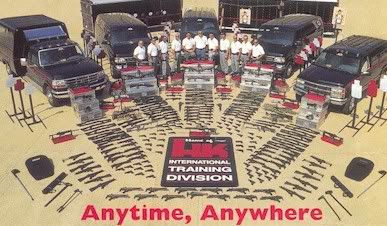

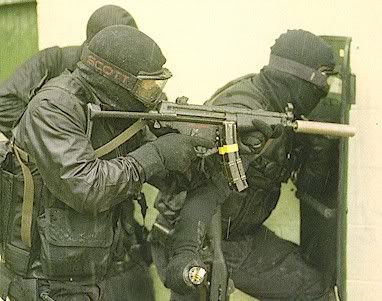
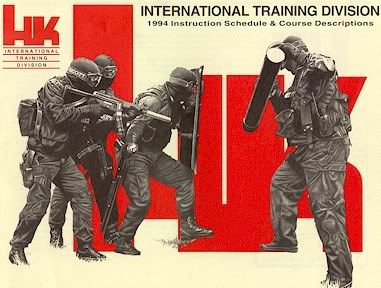
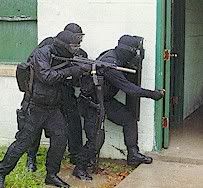
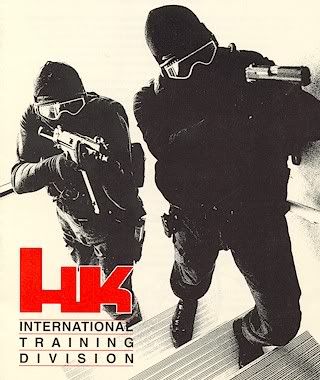
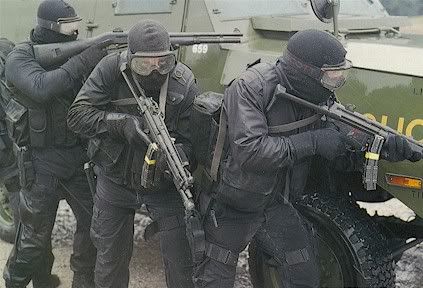
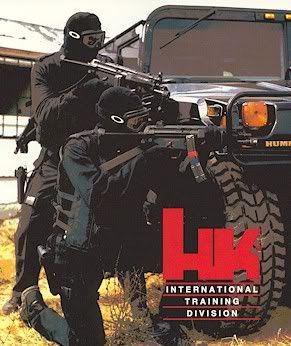
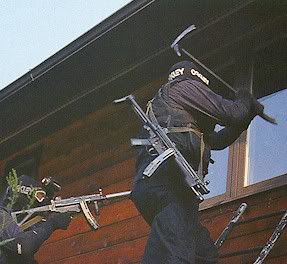
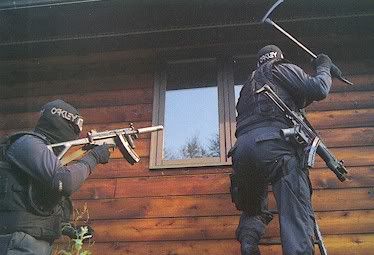
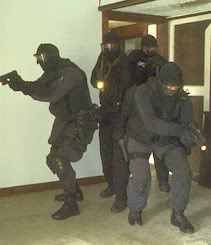
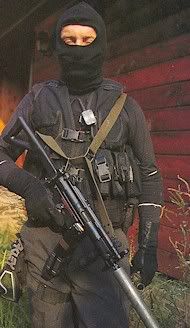
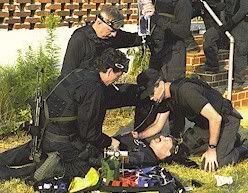
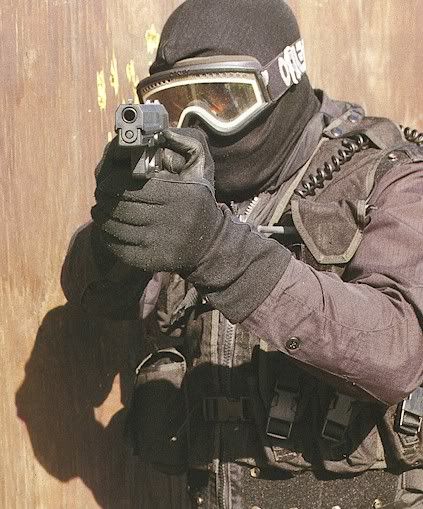

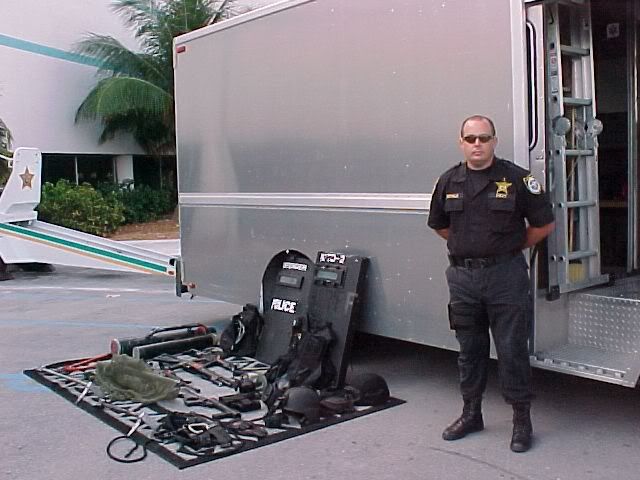




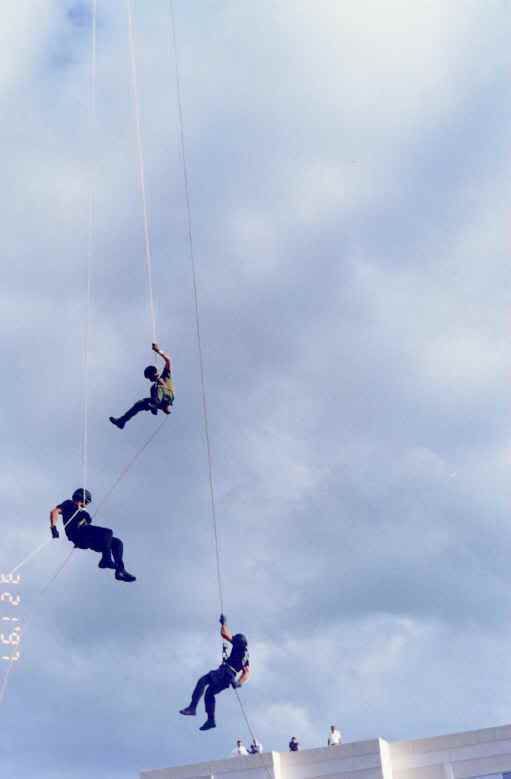
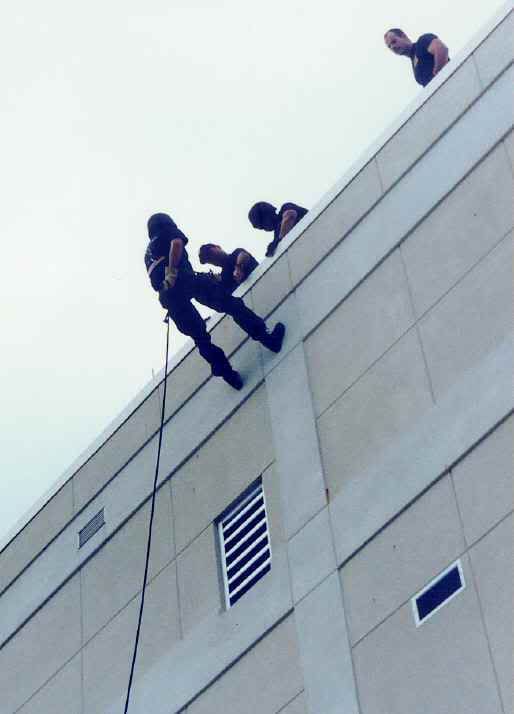
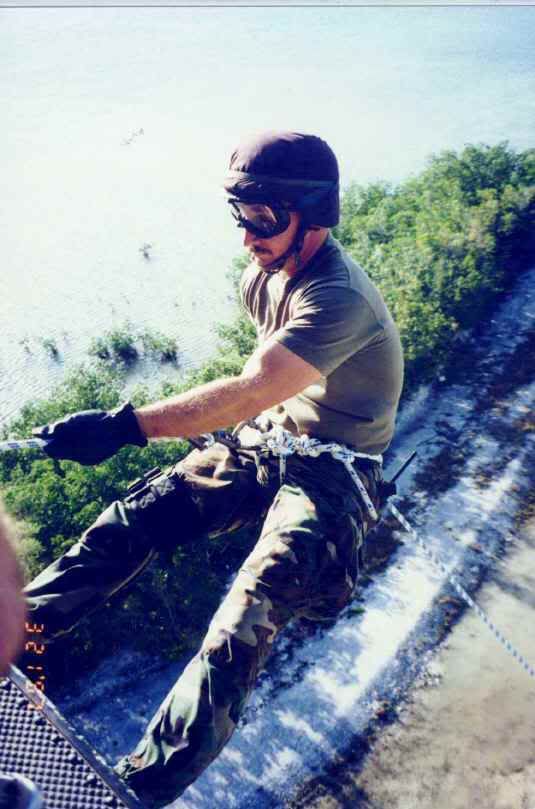
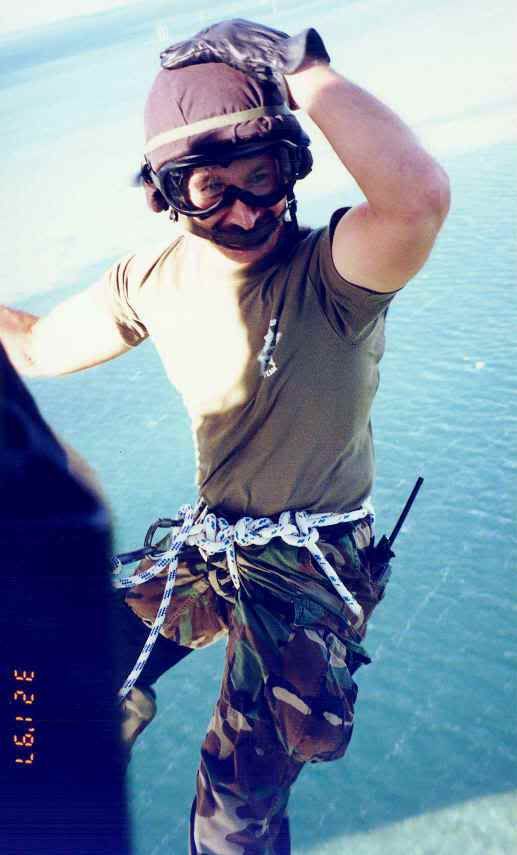
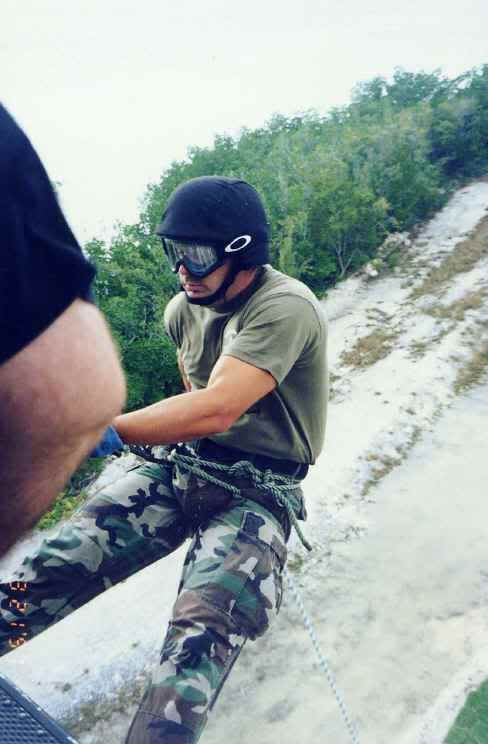
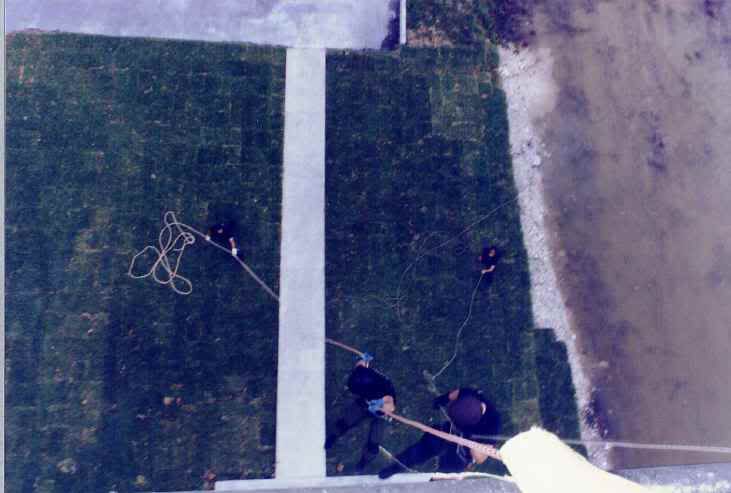
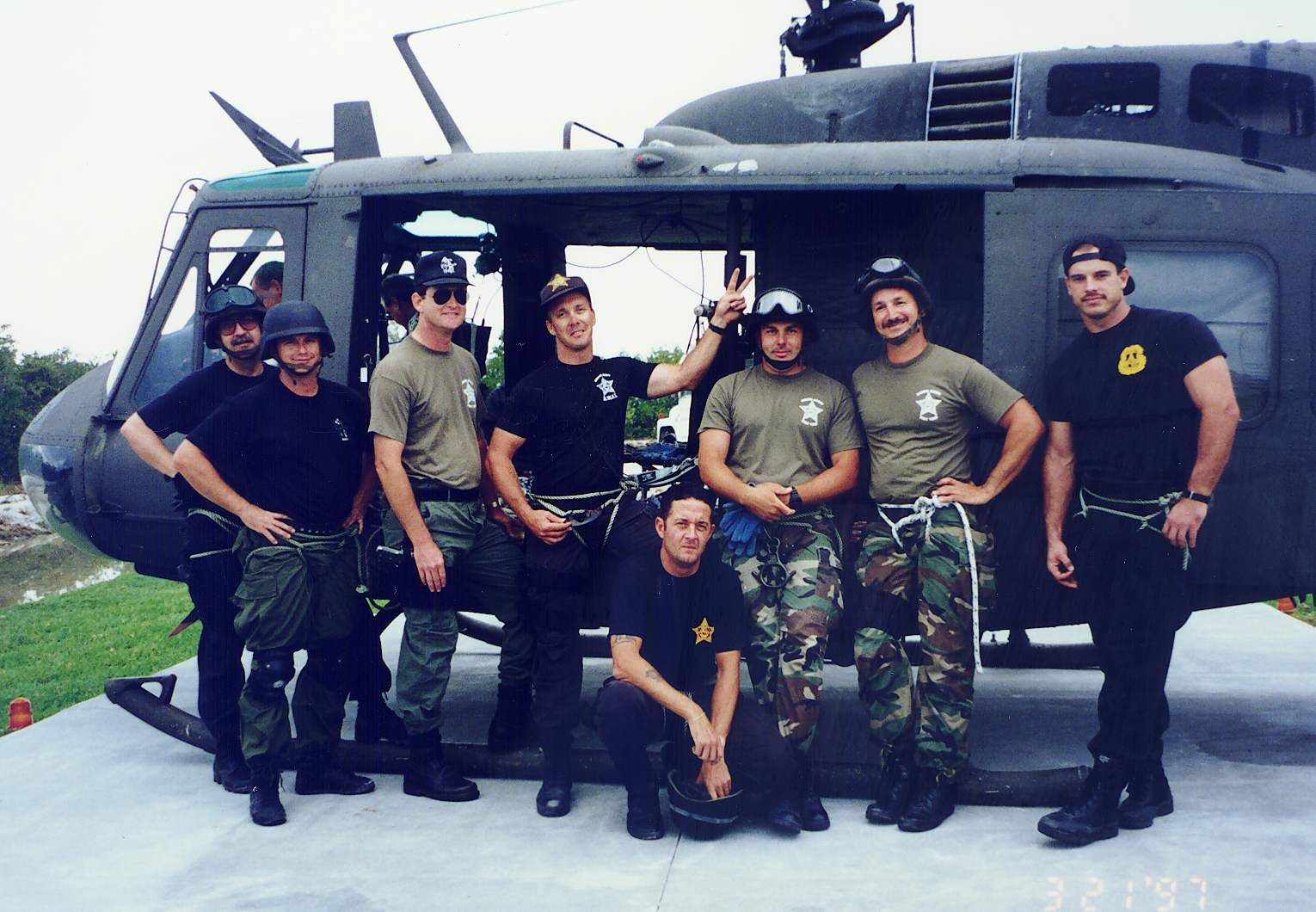
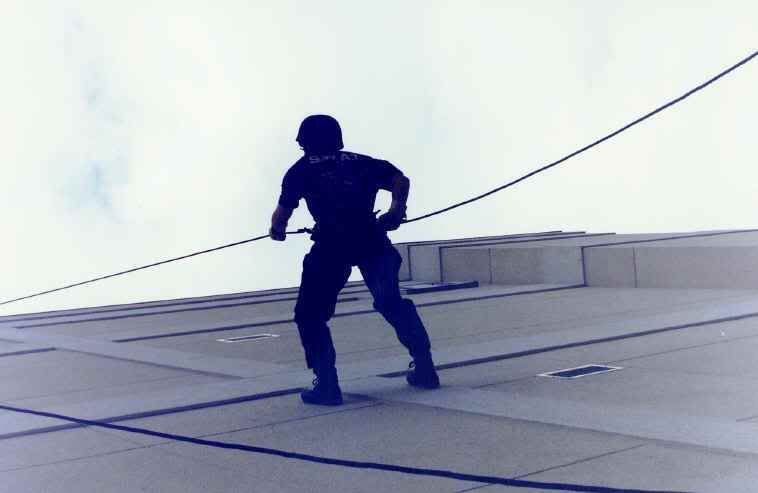
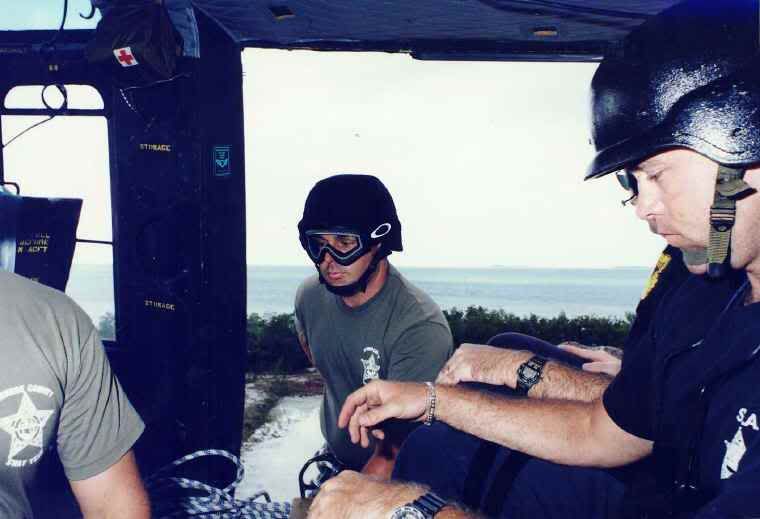
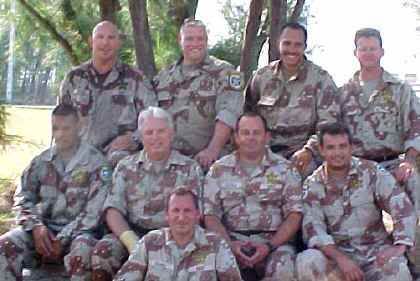
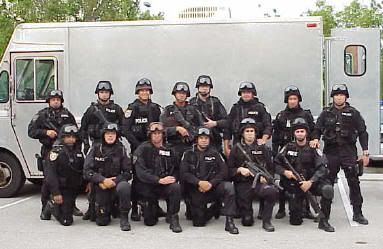
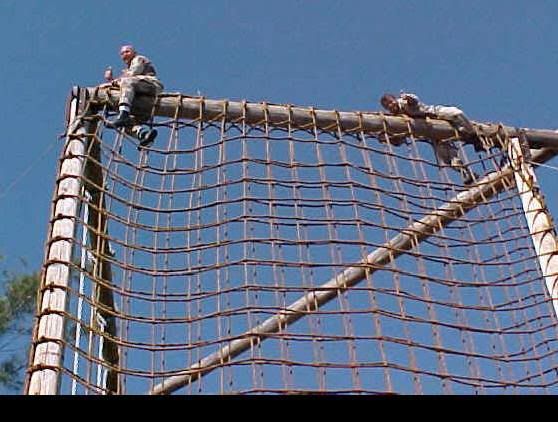
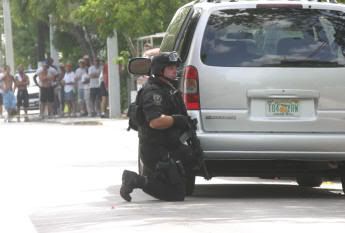
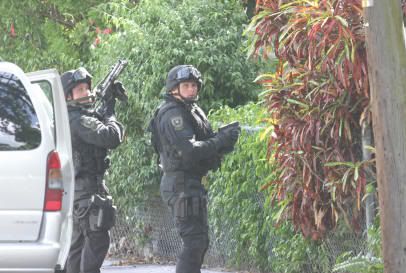
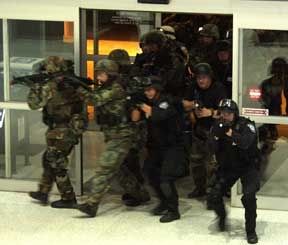
Comment